Jack Cheevers's Blog, page 2
February 15, 2014
Veterans Radio interview about "Act of War"
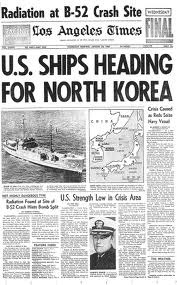 Bob Gould, host of Veterans Radio, a weekly program carried by four radio stations in Michigan and Florida, interviewed me about "Act of War" for close to an hour on Jan. 18. If you'd like to hear the broadcast, paste the following URL into your browser:
Bob Gould, host of Veterans Radio, a weekly program carried by four radio stations in Michigan and Florida, interviewed me about "Act of War" for close to an hour on Jan. 18. If you'd like to hear the broadcast, paste the following URL into your browser:http://www.avemariaradio.net/archive-...
Published on February 15, 2014 18:35
February 8, 2014
A Pueblo gift received -- and Pueblo secrets posted
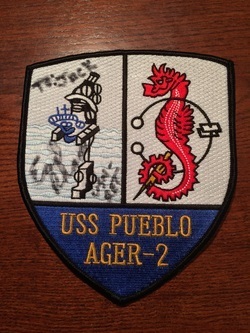 Earl Phares, a former Pueblo seaman, sent me the autographed Pueblo patch you see on the left. It's a terrific gift and I plan to have it framed for my home office. Thank you, Earl!
Earl Phares, a former Pueblo seaman, sent me the autographed Pueblo patch you see on the left. It's a terrific gift and I plan to have it framed for my home office. Thank you, Earl!I'm also happy to report that the National Security Archive, a nonprofit based at George Washington University, recently posted an "electronic briefing book" composed of 25 Pueblo-related documents I had declassified during my research for "Act of War." You can view the collection here:
http://www2.gwu.edu/~nsarchiv/NSAEBB/...
These documents make for some eye-opening reading. Among them you'll find the CIA's secret psychological profile of Pueblo Capt. Lloyd M. (Pete) Bucher; the Pentagon's contingency plan, eerily nicknamed "Freedom Drop," to use nuclear weapons against North Korean troops if they invaded South Korea during the Pueblo crisis; and the "Ball Committee" report, which secretly criticized the military's planning and execution of the spy ship mission before Defense Secretary Clark Clifford ordered all copies of it destroyed. (I discovered a draft copy of the report at the Lyndon Johnson presidential library in Texas that somehow escaped Clifford's order.)
I want to thank John Prados, a prolific author and National Security Archive fellow, for his help in assembling this document collection as well as his excellent introductory essay.
Published on February 08, 2014 18:26
January 20, 2014
Solemn anniversary
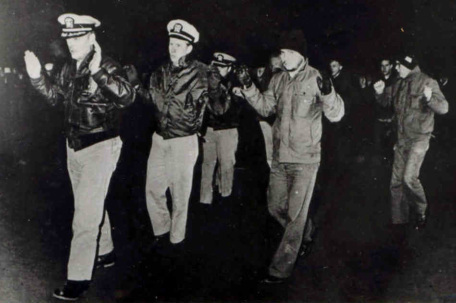 January 23 marks the 46th anniversary of North Korea's unprovoked attack and subsequent capture of the USS Pueblo in 1968. This anniversary shouldn't go unremembered for a number of reasons, not the least of which is the bravery and sacrifices of the 82 American sailors who lived through the attack and then survived 11 months of torture and brutal confinement in communist prisons.
January 23 marks the 46th anniversary of North Korea's unprovoked attack and subsequent capture of the USS Pueblo in 1968. This anniversary shouldn't go unremembered for a number of reasons, not the least of which is the bravery and sacrifices of the 82 American sailors who lived through the attack and then survived 11 months of torture and brutal confinement in communist prisons. Below is a link to my op-ed article which the Cleveland Plain Dealer published on January 17. I wrote that while I don't believe that North Korea will ever return the ship, its presence in Pyongyang serves as a signal warning to Americans about how sloppily planned and executed surveillance missions can bring our nation to the brink of war.
http://www.cleveland.com/opinion/inde...
If you're interested in hearing more about the Pueblo crisis, I'll be discussing it with Rod Utech of POW/MIA Radio on Sunday, Jan. 26, from 2-4 p.m. Pacific Time. The website to listen live is:
http://www.americanewsnet.com/
If you'd like to ask a question about the Pueblo, the toll-free call-in number for listeners is:
877-254-7524.
In the photo above, Captain Lloyd M. "Pete" Bucher (far left) leads his men in North Korea shortly after a flotilla of North Korean gunboats attacked the Pueblo in international waters and forced it into the port of Wonsan.
Published on January 20, 2014 19:47
January 4, 2014
Off to a good start
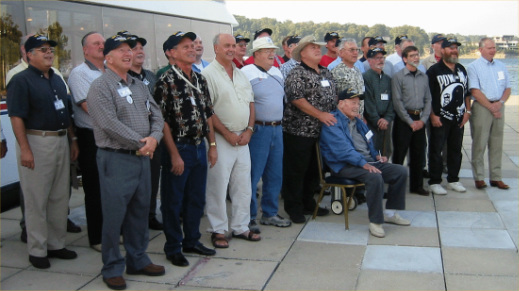 Whew, what a month! "Act of War" was published on Dec. 3 and seems to be off to a good start. It's been written up in USA Today, Wall Street Journal, San Diego Union-Tribune, San Jose Mercury, and Oakland Tribune, and excerpted in Politico.com's new magazine. Michael Connelly, the mystery writer (and an old comrade from our days as Los Angeles Times reporters), called it his favorite book of 2013 in interviews with the New York Times Book Review, Salon.com, and CBS's "Face the Nation." My tired mug and a nice story even appeared on the front page of our neighborhood newspaper, The Monclarion.
Whew, what a month! "Act of War" was published on Dec. 3 and seems to be off to a good start. It's been written up in USA Today, Wall Street Journal, San Diego Union-Tribune, San Jose Mercury, and Oakland Tribune, and excerpted in Politico.com's new magazine. Michael Connelly, the mystery writer (and an old comrade from our days as Los Angeles Times reporters), called it his favorite book of 2013 in interviews with the New York Times Book Review, Salon.com, and CBS's "Face the Nation." My tired mug and a nice story even appeared on the front page of our neighborhood newspaper, The Monclarion.But the most gratifying endorsement of all came from the USS Pueblo Veterans Association, whose members are running a red banner on their website (www.USSPueblo.org) announcing the book's debut. Gentlemen, I can't tell you how much that means to me. From the bottom of my heart, thank you. Some of the veterans are pictured above, at their 2003 reunion in Branson, Missouri, which I had the honor of attending as a guest of Captain Pete Bucher. Pete -- who helped enormously with my book -- is seated in the center; he died only a few months after this picture was taken. Like the Pueblo, he'll never be forgotten.
Published on January 04, 2014 19:37
November 16, 2013
A big week
 A lot going on this week, as Launch Day (Dec. 3) draws near.
A lot going on this week, as Launch Day (Dec. 3) draws near.First,"Act of War" got its second starred review from one of the publishing trade magazines. This time it was Library Journal, which described the book as "enthralling" and said it "deserves a wide audience."
Also, the National Security Archive agreed to post a collection of declassified USS Pueblo documents on its website. The nonprofit Archive, housed at George Washington University in Washington D.C., is devoted to using the Freedom of Information Act and lawsuits to declassify government documents related to U.S. foreign policy, military affairs, and nuclear weapons. Over the years its researchers have uncovered and made publicly available an amazing trove of once-secret documents about the Bay of Pigs, U.S. involvement in the 1973 military coup that overthrew Salvador Allende in Chile, the CIA-engineered coup in Iran in 1953, accidents involving nuclear weapons, and a host of other issues. The Archive has been described as a national treasure, and I couldn't agree more with that assessment.
John Prados, a prolific author and head of the Archive's Vietnam and Intelligence Documentation projects, ran my proposal to share some declassified Pueblo materials past the Archive's board of directors, and they quickly accepted the offer. So I'll be working with John to assemble about two dozen key documents into an "Electronic Briefing Book." We hope to post this collection on the Archive's website on Jan. 23, 2014, the 46th anniversary of the bloody attack and capture of the spy ship by North Korean gunboats.
I'm also very gratified that the Archive wants to permanently store and display much of my full collection of Pueblo documents. This consists of about 40 three-ring binders stuffed to bursting with military and diplomatic cables, intelligence reports, transcripts of closed-door Navy hearings, and news clippings about the capture and its aftermath. I wasn't sure what I was going to do with all this stuff once my book was finished. I'm delighted that it will now be available in perpetuity to other researchers. Thanks, John!
Finally, my terrific editor at New American Library, Brent Howard, shipped me two cases of brand spanking new books this week. I'm busily sending these out to every newspaper book review editor, book blogger, and history magazine editor I can think of. Let me know if you have any suggestions!
Published on November 16, 2013 19:25
November 10, 2013
The tragedy of Charlie Law
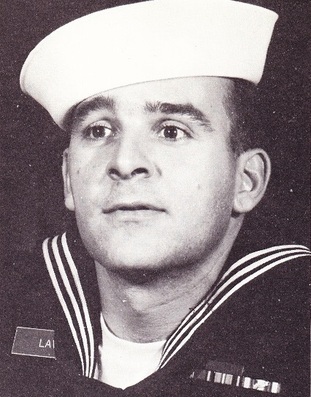 When the Pueblo left Japan on its fateful voyage to North Korea, Captain Lloyd (Pete) Bucher had the conn. Nearby was his navigator, 26-year-old
When the Pueblo left Japan on its fateful voyage to North Korea, Captain Lloyd (Pete) Bucher had the conn. Nearby was his navigator, 26-year-old Quartermaster Charlie Law. Barrel-chested and bass-voiced, Law had emerged as a leader of the enlisted men aboard the spy ship. He loved the Navy and was proud
to the point of cockiness of his talents as a course plotter. He also was grateful to Bucher for qualifying him as an officer of the deck, meaning Law could steer the ship on his own, a rare and exalted station for an enlisted man.
A tenth-grade dropout, the quartermaster had spent his adolescence in Tacoma, Washington, a blue-collar city permeated by the stench
from surrounding mills that sawed and pulped the rich forests of the Olympic Peninsula into wood and paper products. His parents split up when he was four, and his no-nonsense mother raised him with money she made running a tiny greasy spoon. Law tried to enlist at 15, lying about his age and telling the recruiter the timeworn fable that his birth certificate had been destroyed in a fire at the county hospital. But his mother refused to sign the papers. The day he
turned 17, he enlisted on his own.
He worked mostly as a deck ape, chipping paint and mopping decks
aboard a Navy tug, an oil tanker, and a supply ship based in Japan. He was a brash kid, a smart-ass, but he learned fast. Somewhere along the line, a senior quartermaster took Law under his wing and taught him the fine points of shooting stars and fixing a ship’s position.
Law’s prowess with sextant and pelorus made him someone aboard
ship. He had exceptional vision, 20/13 in one eye, 20/14 in the other. He often competed with Bucher, himself an excellent navigator, to spot the first evening star, and Law usually won. He liked that officers depended on him, made important decisions based on his calculations. They simply took his word for where they were. “And I always knew where we were at,” he said in an interview many years later, his pride still evident. “It was the only thing I was really that good at in my life.”
After retiring from the Navy, Law planned to work as a navigator on tuna boats out of San Diego. But the time he spent in North Korean prisons ruined that dream forever. Read about what happened to Law in Chapter 11, “Summer of Defiance.”
Published on November 10, 2013 16:57
November 2, 2013
Nice!
 "Act of War" got a starred review this week from Booklist. Good stuff! Booklist is published by the American Library Association. Here's the review, which will be published Nov. 15:
"Act of War" got a starred review this week from Booklist. Good stuff! Booklist is published by the American Library Association. Here's the review, which will be published Nov. 15:* Act of War: Lyndon Johnson, North Korea, and the Capture of the Spy Ship Pueblo.
Cheevers, Jack (Author)
Dec 2013. 448 p. NAL/Caliber, hardcover, $26.95.
(9780451466198). 359.3.
In January 1968, the USS Pueblo was engaged in electronic surveillance off the coast of North Korea. Apparently, the ship remained in international waters, but the government of North Korea still instructed a gunboat to attack and board the Pueblo and seize the crew. For the crewmen, what followed was an 11-month ordeal that included severe beatings and forced confessions. For the Johnson administration and the American public, it was an ongoing national humiliation that allowed some politicians, including Richard Nixon, to exploit fears about American weakness.
Reporter Cheevers uses interviews with crewmen, former members of the Johnson administration, and newly available government documents to provide a tense, absorbing, and timely account of the episode. At the heart of the narrative is the Pueblo’s captain, Lloyd Bucher, who behaved bravely in captivity, determined to guarantee the survival of his men. Figures in the U.S. government are portrayed less heroically, and the North Koreans are described as terrifyingly
thuggish and paranoid. This is an outstanding and necessary recounting of an affair that should remind us how dangerous the regime of North Korea remains.
— Jay Freeman
Published on November 02, 2013 11:05
October 27, 2013
Snoop ship vs. snoop ship
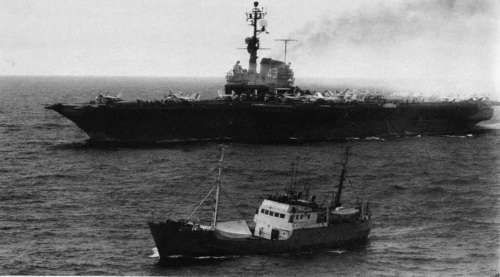
In the 1960s the Soviets developed a relatively cheap way of keeping tabs on American naval movements around the world. They loaded eavesdropping gear aboard fishing trawlers, harmless-looking vessels that could loiter in the vicinity of U.S. warships and naval bases for days or weeks on end. By 1965, almost three dozen Russian trawlers were watching American nuclear subs coming and going from bases in South Carolina, Scotland, and Guam; studying the tactics of U.S. battle groups maneuvering on the high seas; and warning the North Vietnamese whenever Navy fighter-bombers lifted off from aircraft carriers in the Gulf of Tonkin.
The trawlers sometimes even tried to interfere with the carriers, cutting across their bows as they turned into the wind to launch planes. One Soviet boat, the Gidrofon, was involved in six “provocative incidents” in the South China Sea during a single month, December 1965. (In the photo above the Gidrofon paces the carrier Coral Sea.) Another trawler nearly collided with an American destroyer off Long Island, New York, as the Russian captain rushed to recover a test missile fired from the atomic sub USS George
Washington.
The United States soon began outfitting its own small, cheap spy ships under Operation Clickbeetle, a top-secret Navy program to pack refurbished freighters with advanced electronics. Clickbeetle was the pet project of Dr. Eugene Fubini, an energetic, bushy-haired physicist who oversaw key Pentagon research initiatives in the early 1960s. Fubini believed the snooper boats could play an important role in keeping tabs on the Soviets’ rapidly expanding blue-water fleet, which was challenging the U.S. Navy’s supremacy in both the Pacific and the Mediterranean. He wanted up to 70 such vessels, although the Navy ultimately commissioned only three. The Pueblo was one of them.
Published on October 27, 2013 20:13
October 20, 2013
Suspicious cop foils assassination
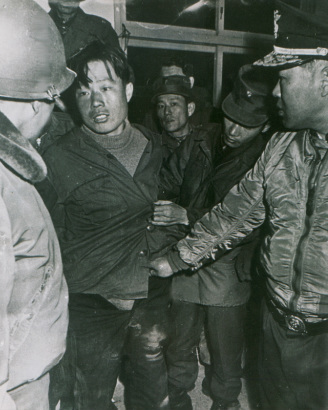 In January 1968, North Korea committed an astonishing act of international savagery: A highly trained team of 31 communist commandos crept into Seoul and tried to murder the president of South Korea, Park Chung Hee. Brazenly marching through the streets disguised as southern soldiers, the raiders got within 1,000 yards of Park’s official residence, the Blue House, before a suspicious Seoul cop finally challenged them. South Korean and U.S. security forces killed or captured all but two of the commandos over the next several days. (This photo shows one of the captured North Korean commandos, Second Lieutenant Kim Shin-jo.) The audacious attempt to assassinate their leader left many South Koreans clamoring for revenge against the north. Both countries placed their armed forces on high alert and geared up for war. But no one bothered to warn Pete Bucher and his men of the tense situation that now existed on the Korean peninsula. Just two days after the commando raid, the Pueblo arrived on the last leg of its spy mission near the heavily defended northern port of Wonsan. (Photo courtesy of JoonAng Ilbo.)
In January 1968, North Korea committed an astonishing act of international savagery: A highly trained team of 31 communist commandos crept into Seoul and tried to murder the president of South Korea, Park Chung Hee. Brazenly marching through the streets disguised as southern soldiers, the raiders got within 1,000 yards of Park’s official residence, the Blue House, before a suspicious Seoul cop finally challenged them. South Korean and U.S. security forces killed or captured all but two of the commandos over the next several days. (This photo shows one of the captured North Korean commandos, Second Lieutenant Kim Shin-jo.) The audacious attempt to assassinate their leader left many South Koreans clamoring for revenge against the north. Both countries placed their armed forces on high alert and geared up for war. But no one bothered to warn Pete Bucher and his men of the tense situation that now existed on the Korean peninsula. Just two days after the commando raid, the Pueblo arrived on the last leg of its spy mission near the heavily defended northern port of Wonsan. (Photo courtesy of JoonAng Ilbo.)
Published on October 20, 2013 12:51
October 20th, 2013
 In January 1968, North Korea committed an astonishing act of international savagery: A highly trained team of 31 communist commandos crept into Seoul and tried to murder the president of South Korea, Park Chung Hee. Brazenly marching through the streets disguised as southern soldiers, the raiders got within 1,000 yards of Park’s official residence, the Blue House, before a suspicious Seoul cop finally challenged them. South Korean and U.S. security forces killed or captured all but two of the commandos over the next several days. (This photo shows one of the captured North Korean commandos, Second Lieutenant Kim Shin-jo.) The audacious attempt to assassinate their leader left many South Koreans clamoring for revenge against the north. Both countries placed their armed forces on high alert and geared up for war. But no one bothered to warn Pete Bucher and his men of the tense situation that now existed on the Korean peninsula. Just two days after the commando raid, the Pueblo arrived on the last leg of its spy mission near the heavily defended northern port of Wonsan. (Photo courtesy of JoonAng Ilbo.)
In January 1968, North Korea committed an astonishing act of international savagery: A highly trained team of 31 communist commandos crept into Seoul and tried to murder the president of South Korea, Park Chung Hee. Brazenly marching through the streets disguised as southern soldiers, the raiders got within 1,000 yards of Park’s official residence, the Blue House, before a suspicious Seoul cop finally challenged them. South Korean and U.S. security forces killed or captured all but two of the commandos over the next several days. (This photo shows one of the captured North Korean commandos, Second Lieutenant Kim Shin-jo.) The audacious attempt to assassinate their leader left many South Koreans clamoring for revenge against the north. Both countries placed their armed forces on high alert and geared up for war. But no one bothered to warn Pete Bucher and his men of the tense situation that now existed on the Korean peninsula. Just two days after the commando raid, the Pueblo arrived on the last leg of its spy mission near the heavily defended northern port of Wonsan. (Photo courtesy of JoonAng Ilbo.)
Published on October 20, 2013 12:51



